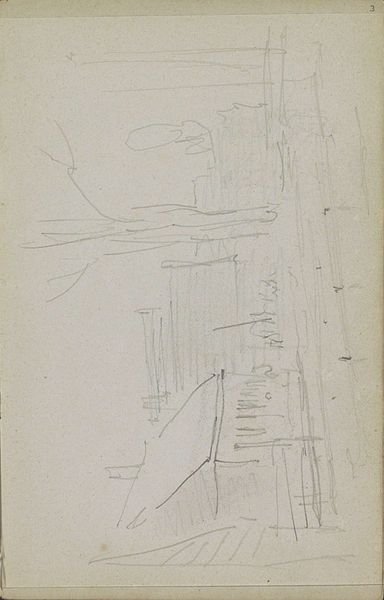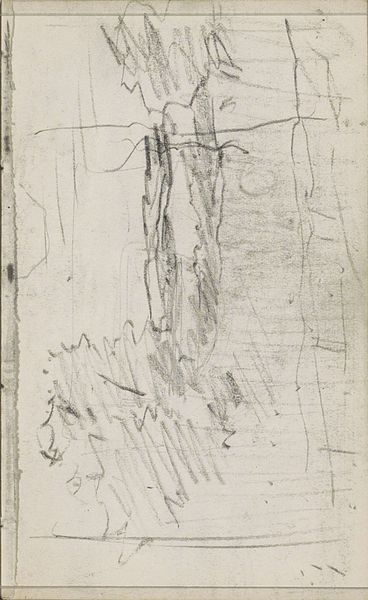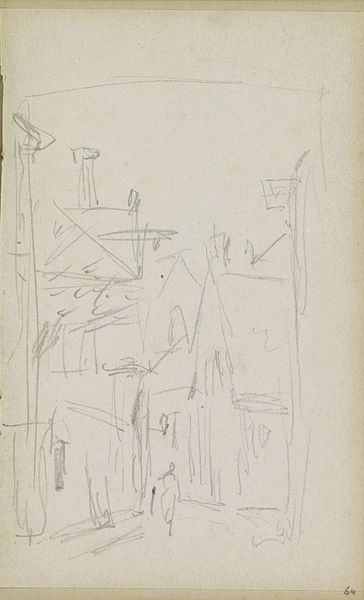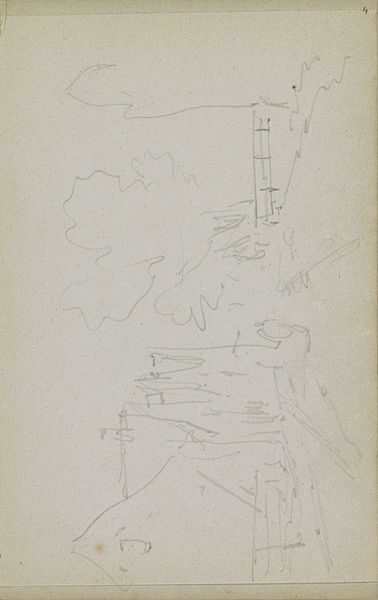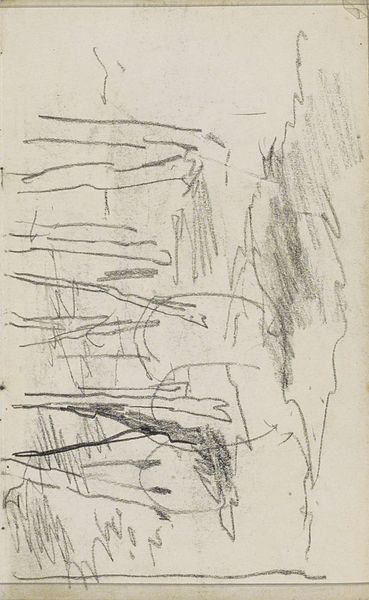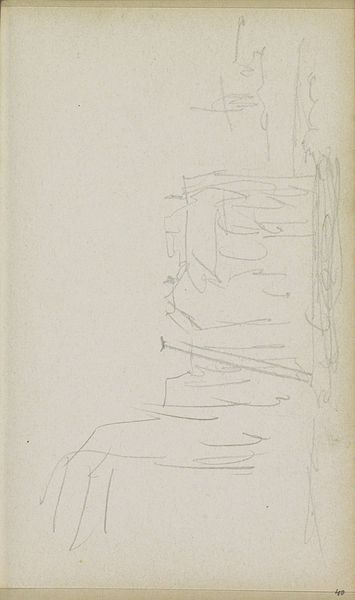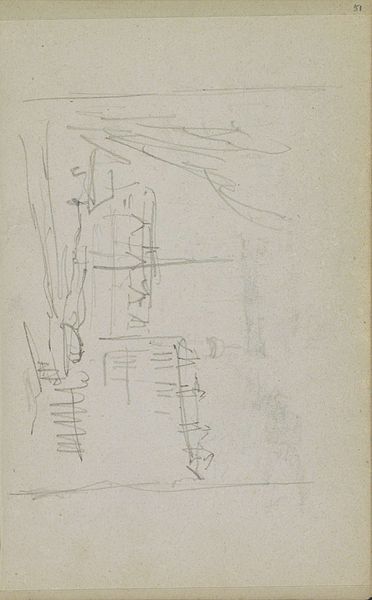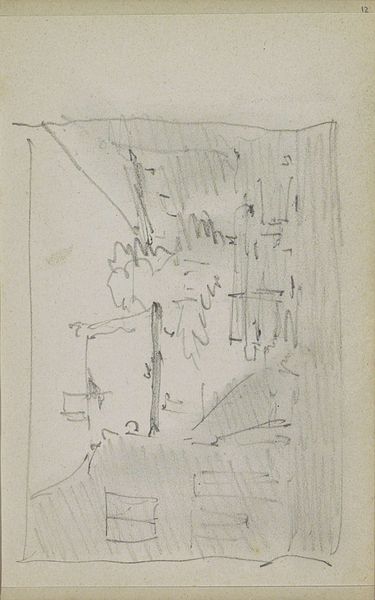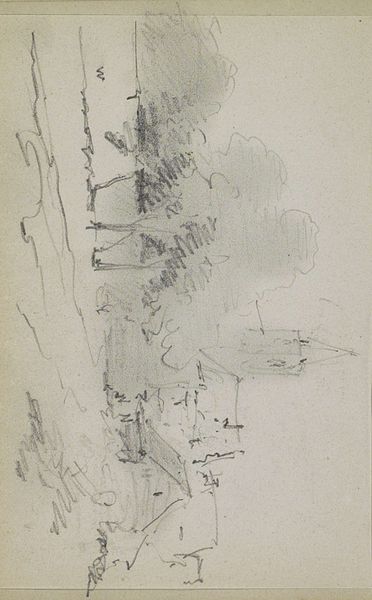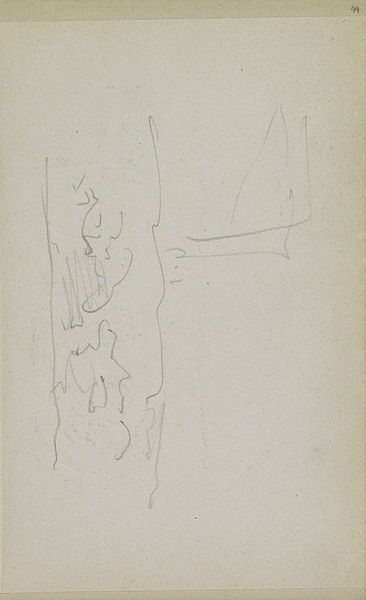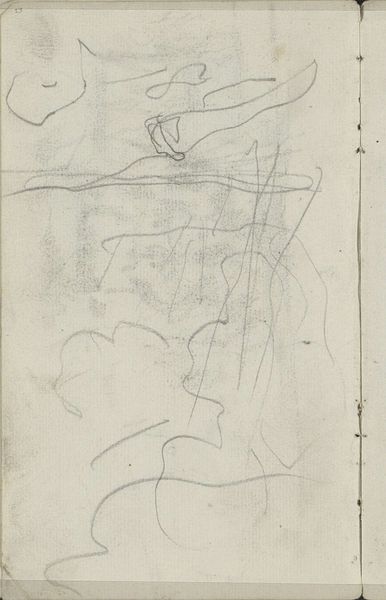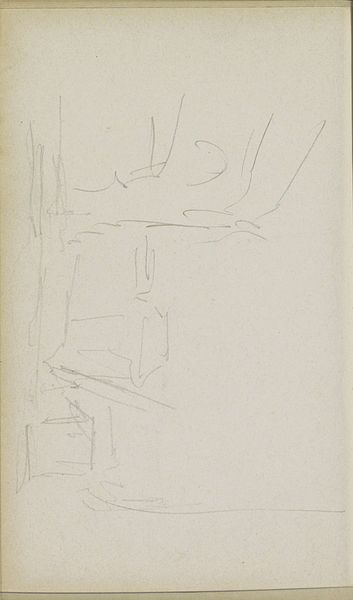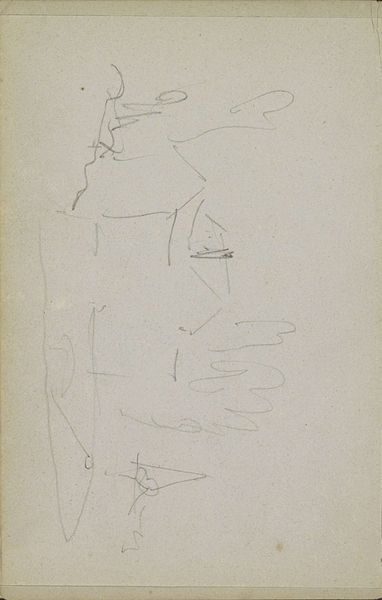
drawing, paper, pencil
#
tree
#
drawing
#
pencil sketch
#
landscape
#
figuration
#
paper
#
pencil
#
line
Copyright: Rijks Museum: Open Domain
Curator: Let’s discuss "Gezicht op gebouwen en bomen", a pencil drawing by Adrianus Eversen, believed to have been created sometime between 1828 and 1897. Editor: Immediately, I'm struck by the stark simplicity and almost skeletal quality of the drawing. It feels more like an initial notation than a finished piece. Curator: Indeed. Note the artist's masterful use of line; how the varying weights create depth and volume with such minimal detail. The structural integrity, the implicit architectural forms… it’s all quite compelling, isn't it? Editor: Certainly. And the visible strokes really highlight the labor, don’t they? You can see the artist's hand moving across the paper, almost sketching the idea, really emphasizing the material and the process. Was this perhaps a study, intended to inform a more realized painting, do you think? Curator: Perhaps. Or maybe it represents a complete aesthetic statement. Consider how the implied geometry offers structure. There’s an elegant austerity, and through restraint the viewer can grasp an archetypal vision. Editor: I agree there’s beauty in the simplicity. The rawness and visible artistic labor speak to the conditions of artistic production itself. I imagine Eversen out there with his materials, a simple pencil and paper, engaging directly with the built environment. It grounds the work in a very real practice. Curator: An excellent point. This work definitely showcases fundamental components such as line and form. These combined compositional elements allow the viewer to see and feel the structures through careful detail. Editor: Yes, but equally significant, is considering the economics and accessibility of the medium. The paper itself, the availability of graphite... How these affected the art created during this time really gives me insight into the artwork as a whole. Curator: Well, regardless of how we interpret Eversen’s goals, this piece provides ample material for contemplating form and structure. Editor: Absolutely. Thinking about the materials and workshopping this way certainly contextualizes not just the artist's touch, but their wider practice within that socio-economic landscape.
Comments
No comments
Be the first to comment and join the conversation on the ultimate creative platform.
